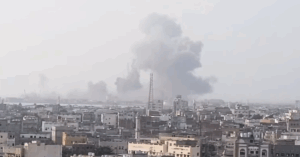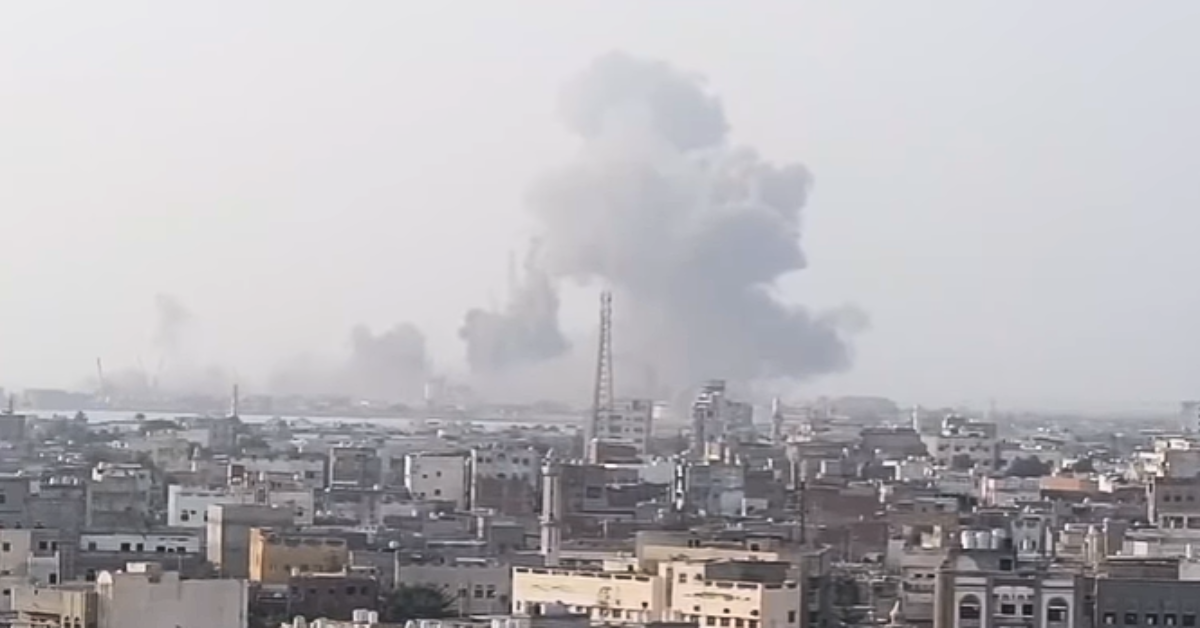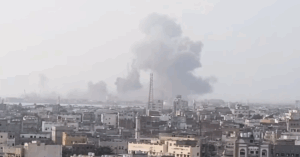
Ukraine Reveals New ‘Ship-Killer’ MAGURA Drones To The Public For The First Time
May 17, 2025
Video: Massive Fire Breaks Out Aboard Scrap-Laden Ship At Amsterdam Port
May 17, 2025

Israel carried out airstrikes on May 16 targeting the Yemeni Red Sea ports of Hodeidah and as-Salif, claiming the locations were being used by the Houthi rebel group to move weapons.
The attacks came after the Houthis fired missiles toward Israel, days after a recent ceasefire deal between the group and the United States.
According to a statement shared on the Israeli military’s social media platform, the strikes were aimed to destroy “terrorist infrastructure” used by the Houthis. The military claimed the ports were part of a weapons transfer network.
The Houthi television channel, Al Masirah TV, also confirmed that Israeli airstrikes hit both ports. Residents in Hodeidah reported hearing four loud blasts and seeing smoke rising from the port area, although no injuries or deaths were confirmed at the time of reporting.
Earlier on May 6, Israeli airstrikes damaged the main airport in Yemen’s capital, Sanaa, killing several people. However, May 16 port strikes were the first to take place since a truce was agreed between the Houthis and the United States earlier this month.
Under the agreement, the US halted its military actions in Yemen, while the Houthis agreed to stop attacking international shipping lanes in the Red Sea. Israel, however, was not part of this truce.
Israel reported intercepting multiple missiles launched from Yemen in recent days. The Houthis have said their attacks are in solidarity with Palestinians in Gaza, where Israel’s military campaign has continued since October 2023.
Israeli Prime Minister Benjamin Netanyahu responded to the latest launches by warning of more powerful strikes if attacks continue. In a statement posted on the government’s official channel, he described the Houthis as “just a tool” being used by Iran, and said Israel would not hesitate to strike their leadership and infrastructure.
Netanyahu said that they will not stand idly by and let the Houthis harm them. He added they will strike them with greater force, including their leadership and all the infrastructure that enables the group to attack them.
Israeli Defence Minister Israel Katz also issued a strong warning, saying that Houthi leader Abdul-Malik al-Houthi could be targeted if missile attacks on Israel continue.
Katz added that al-Houthi could face the same outcome as Hamas commanders Yahya Sinwar and Mohammed Deif in Gaza, Hamas political chief Ismail Haniyeh in Iran, and Hezbollah leader Hassan Nasrallah in Lebanon-all of whom were killed in Israeli operations over the past year.
Katz and Netanyahu issued a joint statement declaring they would “hunt down and eliminate” al-Houthi if the attacks continue. The Houthis are part of what Iran calls the “Axis of Resistance,” a coalition that includes Hamas in Gaza and Hezbollah in Lebanon.
Per reports, the group controls around 60% of Yemen’s population. Since the start of the war between Israel and Hamas in October 2023, the Houthis have fired dozens of drones and missiles toward Israel. Most of these were either intercepted or fell short of Israeli terrotiry.
Al Jazeera’s reporter Hamdah Salhut, reporting from Amman, Jordan, said that the Houthis have launched at least 34 projectiles toward Israel since March, when Israel ended a temporary ceasefire with Hamas and resumed its operations in Gaza, reportedly killing around 3,000 people since then, according to Gaza’s Health Ministry.
References: Aljazeera, Reuters
Source: Maritime Shipping News


